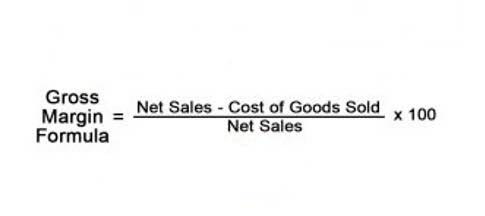
With this info, you’ll be confident about what to do at the start or end of your financial period. The closing balance is the amount remaining in an account at the end of an accounting period. Again, this can be a debit or credit (a positive or a minus), after recording all of the transactions for that period in your bookkeeping. The opening journal entry is made by extracting the closing balances of the previous financial year and reporting it as the opening balance of the current year. According to the modern accounting approach, assets, liabilities and owner’s equity (capital) have opening balances.

Opening and closing balance

A trial balance is a statement that lists all the ledger accounts and their respective debit and credit balances. If the trial balance totals match, it indicates that the books of accounts are balanced. When you start a new business your opening balances are zero, unless you spent money before setting it up. Money from investors or lenders will be entered as transactions during the accounting period. Knowing what the opening and closing balances of your business are will help to establish exactly how well things are going. Partnering with a payment platform like GoCardless makes it simple to keep track of the cash flowing into your business and use this to calculate the balance of your business account.
How do I get rid of opening balance equity?
- Discover what is an opening balance, how to calculate it and the different types of opening balances.
- This balance acts as a starting point, allowing businesses to accurately track the flow of funds and assess their financial position.
- It acts as a temporary holding spot, reflecting the net value of a company’s assets minus its liabilities at the start of a new accounting period.
- Money from investors or lenders will be entered as transactions during the accounting period.
- As a business evolves, it may need to create new accounts to reflect changes in its operations or to improve financial reporting.
- It represents the amount of money a business had at the start of an accounting period.
If you switch from one accounting system to another, your opening and closing balances are key to starting your new records accurately. An opening balance is the balance of an account at the start of an accounting period. It’s brought forward from the closing balance of the previous accounting period.
Income Statement
Keep in mind that closing the balance equity to retained earnings or owner’s equity is essentially the same concept. These equity accounts are just labeled differently to represent the ownership or form of a business. The figure of £40,000 represents the closing balance at the end of December 2020. However, it also represents the opening balance at the start of the next accounting period, i.e. Rather than there being a specific formula for calculating an opening balance, therefore, there is a formula, as set out above, for calculating a closing balance, based on money moving in and out of the what is opening balance business. In the ledger, balance b/d means opening (or) the beginning balance of an account.

Bringing an Opening Balance Equity Account to Zero
If you’re new to business accounting, there’s may be some unfamiliar terms coming your way. As part of our series of accounting FAQs, we cover common accountancy terms to help you understand exactly what everything means. Chartered accountant Michael Brown is the founder and CEO of Double Entry Bookkeeping. He has worked as an accountant and consultant for more than 25 years and has built financial models for all types of industries. He has been the CFO or controller of both small and medium sized companies and has run small businesses of his own. He has been a manager and an auditor with Deloitte, a https://x.com/BooksTimeInc big 4 accountancy firm, and holds a degree from Loughborough University.

Calculating Opening Balances
- Knowing how opening balances work can help you make informed decisions, maintain accurate financial records, and ensure compliance with tax authorities.
- The best practice is to close opening balance equity accounts off to retained earnings or owner’s equity accounts.
- You can use them to view the accumulated profits from all of the years you’ve been operating, including your assets, such as your bank balance and your liabilities, like loan repayments.
- What your opening balance is, and what it means for your business, will vary depending on whether you’re starting a new company or managing the accounts of an existing one.
The significance of Opening Balance Equity extends beyond https://www.bookstime.com/ mere numbers on a ledger; it ensures continuity and accuracy in financial reporting. By effectively managing this element, companies can maintain the integrity of their financial data, which is crucial for informed decision-making and maintaining stakeholder trust. An opening balance is the amount in an account at the start of an accounting period. You might hear it referred to as the amount ‘brought forward’ (BF) from the previous period. On the left hand side of the accounting equation the assets increase by 63,500. This is matched on the right hand side by an increase in liabilities of 42,750, an increase in equity of 20,750.
- Whether you’re just starting your business or you’re an experienced entrepreneur, understanding the concept of opening balance is crucial for managing your company’s finances.
- However, If you are doing the calculations yourself, or if you are just starting your business, you can determine your opening balance with a balance sheet, using any spreadsheet app.
- It serves as a starting point for assessing the company’s financial position and performance during the accounting period.
- During the audit, the focus is on validating the existence of assets and liabilities that contribute to the Opening Balance Equity.
- If you’re new to business accounting, there’s may be some unfamiliar terms coming your way.
In addition, accurate opening balances contribute to the overall credibility and transparency of a company’s financial reports, fostering trust among stakeholders and facilitating business growth. However, depending on the timing and how you’ve set up your business, you may need to enter some opening balances to correctly show investments made into the company and other initial transactions. Here at Big Red Cloud, we recommend checking with your accountant if you are unsure, as they will have direct knowledge of your unique business. But for an opening balance figure to be accurate, every transaction (whether that’s earnings or outgoings) has to be accurately recorded, either in your accounting software or your cash book. This balance acts as a starting point, allowing businesses to accurately track the flow of funds and assess their financial position.
